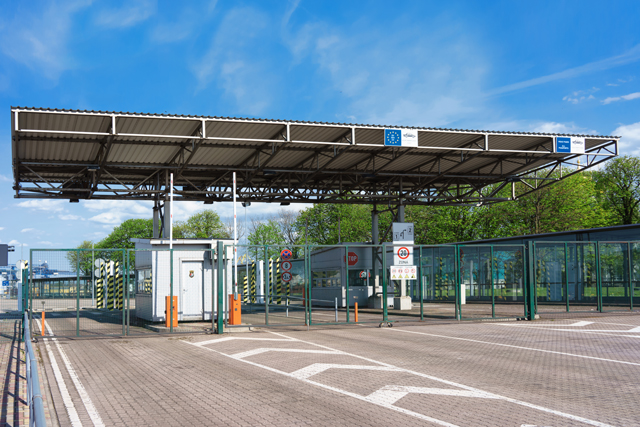Recent months have brought about a huge boom in the delivery, and we don’t anticipate it dropping off any time soon. As a result, many delivery services are thriving and considering their options when it comes to their next move. Their drivers and technicians are out every day delivering products and services to their customers, and life is good.
For many delivery companies using your solution, the reality right now is that orders are arriving over e-commerce and directly with Order Management and Customer Services operations, the Warehouse Management solution is efficiently planning out picking and packing better than ever before, and the Telematics solution is tracking drivers and field service staff as they are busy satisfying customers. With this growth comes the opportunity to do things even better, to maximize the efficiency of operations to keep costs under control, and to start evaluating options for what comes next.
Many delivery company owners are asking themselves: when is it time to add more vehicles, drivers, and technicians? When is it time to start committing to and communicating detailed delivery windows directly with customers? When is it time to add a software tool to optimize last-mile deliveries? Analysts and independent software vendors (ISVs) consistently report that software optimization can provide 30% higher efficiency and utilization of delivery assets, allowing users to deliver more without adding headcount, costs, or complexities. Optimizing delivery schedules saves your customers valuable time every day, as well.
With all of this in mind, it’s clear that integrating route optimization into your existing solution is the smart move. But how do you go about it? Do you hire staff to build a custom feature in your solution, or do you buy something and integrate it in as a white-labeled component inside your solution? It all depends on your goals.
What Are We Trying to Achieve?
The ideal tool will build route plans that maximize the efficiency of your customers’ transport or field service business. To accomplish this, you’ll have to enable your customers to utilize their resources as efficiently as possible while simultaneously complying with all of their logistics constraints. Optimizing the customer experience ensures that the customer is happier while saving on operational expenses.
Satisfying end customer needs can deliver tremendous benefits. As Fort Point Beer Logistics Manager Nora Batho found, “[The API] has kept us flexible in responding to quick expansion of our distribution needs. It helps increase our responsiveness and efficiency, while the flexible API integration allows us to plan ahead and strategize within delivery zones in real-time.”
Leveraging a solution that can plug into existing infrastructure by using simple APIs can be much more cost effective than building a solution from scratch.
Why Is This Complex?
Business Rules
When your customers’ fleets and teams are used optimally, they will start getting closer and closer to saturation; that is to say that every business has a cap on how many locations they can serve with their existing resources. Sooner or later, your resources will become insufficient for serving all the locations on your route plans. If you have ever experienced a resource saturation scenario, you already know that hand-built optimizers will automatically tune the route plans to make sure that the number of unserved locations is at the minimum. This is the only principle behind a standard route optimizer experiencing resource saturation, but it misses the business principle of prioritizing service for an important customer if it comes at the cost of more unserved locations overall. In other words, an optimizer has a tendency to be greedy and ignore important business priorities, critical deliveries, and appointments.
Leading commercial solutions incorporate heuristics (business rules) in addition to mathematical optimization, including the level of importance for a particular appointment. This way, unserved locations will be chosen from among lower importance options in the event of resource saturation, while higher importance locations will be served as a priority.
Constraints
A standard optimizer will likely utilize some well-known constraints, including vehicle constraints, employee hours, hours of operation, average travel times, and customer delivery windows. However, life isn’t predictable and a software package needs to build on these basics with complex additions such as multiple dimensions of vehicle and driver constraints, road editors to adjust roads to accommodate temporary disruptions, traffic patterns based on days of week and time of day, maximum employee hours and/or overtime costs, and product compatibility on a vehicle.
Fixed and hourly costs make it possible to ensure that the total expenses deriving from overhead and time-based costs are minimized during the optimization process. Other complexities include selecting only the most cost-effective drivers and vehicles to achieve an efficient route for satisfying all work calls and providing measurable savings. Special driver regions can be defined, as well, making sure that all stops within a region are served by the corresponding field technician or transporter. Complex constraints such as these are difficult and expensive to build and must also keep pace with changing fleet conditions—an important factor that a software vendor can be relied upon to continue to maintain.
Required Components
Another complexity of building a routing optimization solution is selecting and integrating the necessary technological components that comprise the solution itself. When building the solution, choosing what to include is entirely up to the development team at that time; a purchased solution, though, will have these components already included and will be continually maintained and updated with new features and functions as technology and customer expectations continue to evolve. Knowing that these considerations have already been made can make a purchased solution ready-to-use from the start.
Questions to Think About
Companies trying to decide whether to build an optimization solution or buy one should take time to ask themselves the following:
- Do we have the expertise not only for optimization but for business rules, telematics and mapping integration, business processes, and regional modeling?
- Do we have the time to design, build, test, and launch our own software components, or do we want to buy something ready to use?
- Do we want something very specific to our use case, or a configurable tool developed using customer and market feedback?
- Do we have the budget to assign staff to update the solution to accommodate changes in our fleet, customers, delivery capacities, and constraints in the future?
Addressing these questions up front can help executives head down the build vs. buy path that makes the most sense for their organization.
Closing Thoughts
With the compression of time and raised expectations from your customers, optimal scheduling of resources and services is an indispensable component of enterprise software. While mathematical route optimization is well documented, it can be seen that an enterprise-class solution requires more than just theoretical math.
Today, software providers are purchasing OEM route optimization solutions to immediately and effectively deliver solutions to their customers, making it easy for you to integrate true route optimization and resource management into your existing processes in order to streamline your operations, satisfy more customers, and bolster your bottom line. To learn more about WorkWave’s integrated Routing Engine solution and how it can streamline your operations, contact us today.




